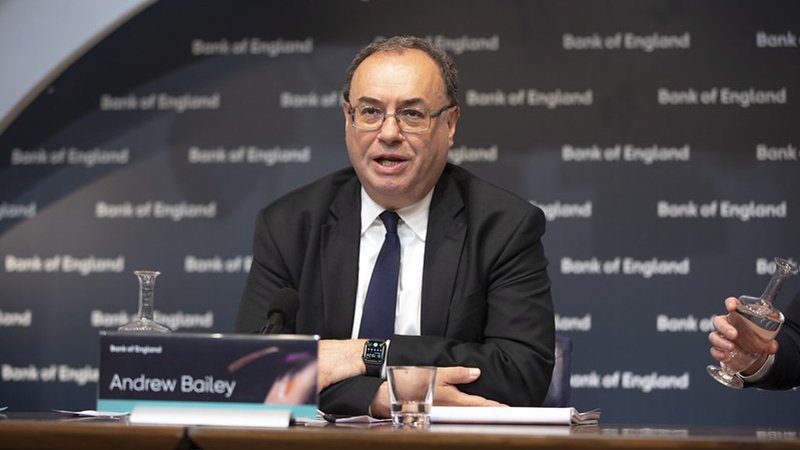The Bank of England’s Monetary Policy Committee has delivered a fifth consecutive increase in the base rate – taking it to 1.25%, a level not seen since 2009.
Six members of the MPC backed the 0.25-percentage-point increase, while three members had pushed for 0.5 basis points (bps).
In its announcement, the committee cited weaker-than-expected GDP figures, depressed consumer confidence, the tight labour market, commodity prices and persistently high inflation – currently at 9% and expected to hit double-digits in Q4 2022 – as drivers behind the decision.
See also: Shock GDP contraction puts BoE balancing act under pressure
MPC’s hands are tied
Alan Custis, managing director at Lazard Asset Management, said: “The MPC continues to balance the inflationary effects on the economy, with the very real chance that they tighten too much and the UK economy lurches into a full blown recession.
“Andrew Bailey (pictured), governor of the Bank of England, has been slow in tackling inflation, for which he has come in for some criticism by MPs, and this move today balances all of the factors that are currently weighing on the economy.”
Martin Lawrence, director of investments at Wesleyan, said: “Faced with runaway inflation, the Bank of England was under immense pressure to act urgently, so today’s announcement is no real surprise.
“We expect further interest rates rises tipping towards 3% in the months ahead; however, the MPC’s hands are partially tied in that they can’t raise rates too high or too quickly, or else risk smothering the UK economy.”
George Lagarias, chief economist at Mazars Wealth Management, added today’s move needs to be seen in the context of the Fed’s “very aggressive tightening yesterday”.
“Growth is already slowing significantly, so the Bank chose a more paced approach than the Fed to avoid putting too much pressure on consumers. Having said that, three members voting for a larger hike suggests more pressure on rates going forward.
“We believe that we are in a new era for central banks, where lowering inflation is their only objective, even at the expense of financial stability and growth.
“As investors, we are worried about how much and how fast economic growth will slow and how markets will react as they realise they need to search for a new paradigm.”
Writing was firmly on the wall
The announcement comes a day after the Federal Reserve delivered a 75bps hike.
Chair Jay Powell said: “We at the Fed understand the hardship high inflation is causing. We are strongly committed to bringing inflation back down, and we are moving expeditiously to do so.”
The annual inflation rate for the US is 8.6% for the 12 months to the end of May 2022.
The 75bps hike was foreshadowed last month when the US central bank announced such a jump could not be ruled out after inflation came in hotter than expected.
It is the largest increase since 1994, with the Federal Open Markets Committee (FOMC) voting to lift the federal funds rate to between 1.5-1.75%. Only one member of the committee was opposed to the move, preferring a 50bps rise.
Between a rock and a hard place
“By the end of the year, markets are pricing in a Fed funds rate upper bank of at 3.75%,” said AJ Bell investment director Russ Mould. “[It] last stood above 3.5% in late 2008, when the US central bank was frantically slashing borrowing costs in an unsuccessful effort to stave off a deep recession.”
Mould said this leaves the Fed with two problems.
“First, the last time US inflation was at 8.6% in late 1981, the Fed funds rate stood at 12%. That implies the US central bank is so far behind the inflationary curve this time around that it can barely see it – hence markets’ expectations of an accelerating upward rate cycle this time.
“Second, there a clear trend of each Fed rate cycle peaking at a lower level. This is because progressively lower rates (and then QE) have encouraged more borrowing by government, corporations and consumers alike.
“As a result, the US economy is much more sensitive to even minor changes in interest rates. It means the chances of headline borrowing costs returning to early-1980s levels in the fight against inflation look to be nil – the US economy just wouldn’t stand it.”
He said the Fed is “facing a choice of jacking up rates and tipping the economy into a slowdown, or letting inflation run away and do the same damage in a different way”.
“In these circumstances, it’s no wonder markets are jittery,” Mould added.







